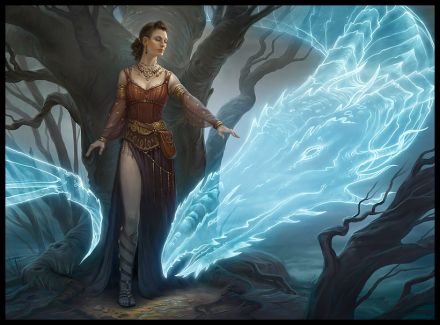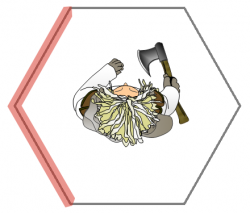Difference between revisions of "Interposing Aura (sage ability)"
Tao alexis (talk | contribs) |
Tao alexis (talk | contribs) |
||
| Line 1: | Line 1: | ||
[[File:Interposing aura (2).jpg|right|440px|]] | [[File:Interposing aura (2).jpg|right|440px|]] | ||
| − | Through training and practiced meditation, the character is able to produce an unusual mystical emanation, in the language of monks called "the dragon." This is more familiar to some as "wild magic." The aura thus created is both magical and invisible; the effect is to cloud the minds of enemy combatants so that they cannot attack — or have not the will to attack — from specific quarters as chosen by the character. | + | Through training and practiced meditation, the character is able to produce an unusual mystical emanation, in the language of monks called "the dragon." This is more familiar to some as "wild magic." The aura thus created is both magical and invisible; the effect is to cloud the minds of enemy combatants so that they cannot attack — or have not the will to attack — from specific quarters as chosen by the character. These enemies act towards the aura as though moving around it to attack is a perfectly natural and ordinary thing to do. |
[[File:Interposing aura.png|left|250px|]] | [[File:Interposing aura.png|left|250px|]] | ||
Revision as of 02:51, 20 March 2020
Through training and practiced meditation, the character is able to produce an unusual mystical emanation, in the language of monks called "the dragon." This is more familiar to some as "wild magic." The aura thus created is both magical and invisible; the effect is to cloud the minds of enemy combatants so that they cannot attack — or have not the will to attack — from specific quarters as chosen by the character. These enemies act towards the aura as though moving around it to attack is a perfectly natural and ordinary thing to do.
In game terms, this translates as closing off two sides of a combat hex, as shown in the image; the two sides chosen need not be adjacent. To evoke the aura, the character must spend one full round in meditation; this meditation has similarities to spellcasting, except that to break the character's concentration requires damage, and that a successful meditation can be attempted as often as desired. The character can take no other action during this meditation.
Once evoked, the aura will remain, so long as the character does not leave the hex; a stun lock that knocks the character out of the hex would be sufficient. Once in place, neither enemies nor allies will feel able to attack in melee through the aura — that is, hand-to-hand. Missile weapons attacks and magic use is not prevented. Though it is possible for the character to attack through this barrier, doing so will dispel the aura until it can be evoked again.
The aura does not conceal the character's presence or restrain enemies from moving to a place where they feel able to attack. The aura merely conveys a strong conviction that the character is impregnable upon any point where the aura is in place.
Take note that if the prepared character were to stand fast in a narrow corridor, or upon a bridge, they could deny an enemy the will to advance directly; however, an enemy would only choose to attack with missile weapons, no doubt forcing the character to give ground.
The aura will affect creatures, regardless of size or intelligence. The aura will not prevent attacks from above. Another character with the sage ability will be able to ignore the aura.
See Way of the Dragon

